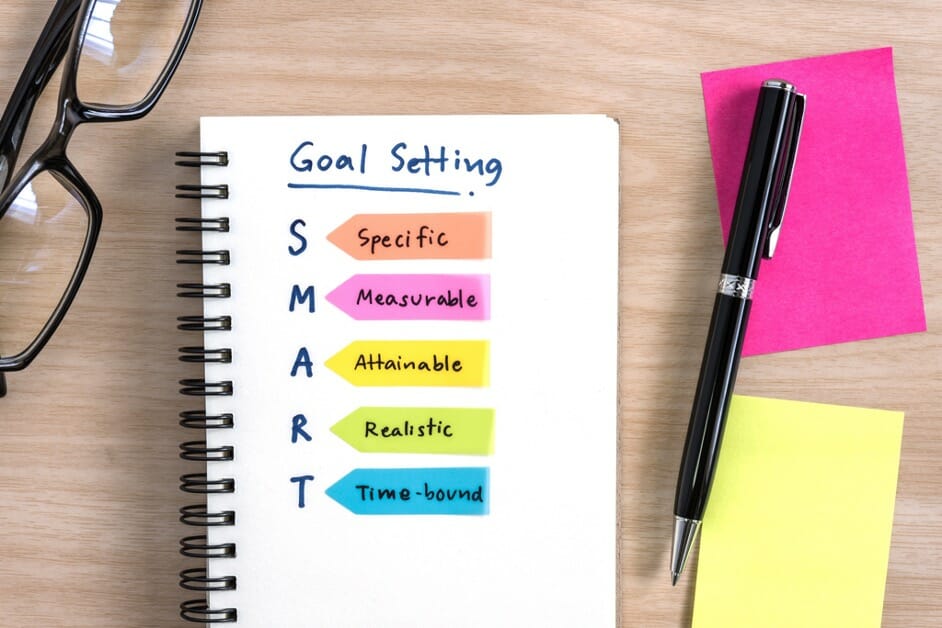Ashleigh Kidd, RD, LDN | August 2022

“I want to drink more water”
“I need to prioritize sleep”
“I would like to eat more vegetables”
Do any of these sound familiar? These are all GREAT positive health changes, right? They also seem very attainable at first glance. But sometimes, voicing our goals, wants, and needs, don’t always come with follow through.
Here’s where SMART goals come in. When you’re ready to make changes, sometimes (a lot of the time), it’s tempting to go for the quick fixes and harsh extremes, but if you’ve done this in the past, and most of us have at some point, you know it’s a short lived sense of control and doesn’t often lead to long-term habits. Sustainable, realistic for YOU health habits will always be the best and most effective choice both physically and mentally.
What are SMART Goals?
Setting SMART goals can help you to get specific with your goals, taking a thought or general goal and turning it into a do-able and measurable goal that is realistic to you and your lifestyle.
- Specific
- Measurable
- Attainable
- Realistic
- Time-bound
Let’s take our examples from above and turn them into SMART goals:
General Goal: “I want to drink more water”
SMART Goal: “I will drink one full glass of water when I wake up at 8am on weekdays. I will set out a carafe or water bottle on my bed-side table each night to set myself up for success”.

General Goal: “I need to prioritize sleep”
SMART Goal: “I will be in bed with the lights off by 10pm, Monday – Thursday. I will put my phone on silent and place it on the other side of the room to limit screen time/blue light before bed”.

General Goal: “I would like to eat more vegetables”
SMART Goal: “I will fill half of my plate with veggies at dinner, 4 nights this week. I will wash and cut my veggies at the beginning of the week to make my goal attainable.”

What goals will you set for yourself during IGNITE?
Here are some tips and reminders:
- When creating a SMART goal, focus on habit building rather than the end result.
- Identify what will make it most realistic (and easier) for you to achieve your goal and turn it into a habit (i.e. prepping your produce at the beginning of the week, or bringing your gym bag to work).
- These goals are completely custom to YOU and your lifestyle. Don’t set a difficult and unrealistic goal because you think it’s what you are “supposed” to do. Focus on what’s attainable, what you’re likely to stick with, and what you can build on.
- If you realize a goal is not realistic for you right now, try restructuring the SMART goal to fit your schedule, or drop it for now and focus on another area. You can always revisit and adjust your goals as needed.






